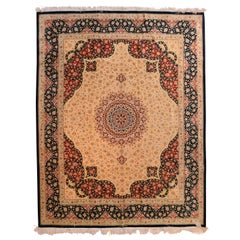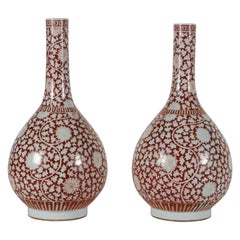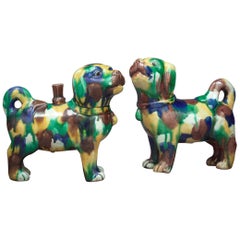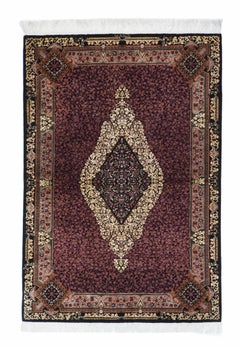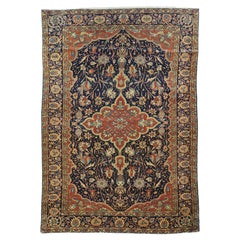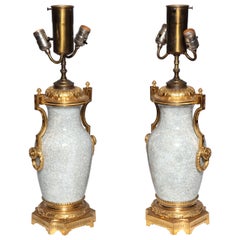Manhattan - Asian Art and Furniture
20th Century Persian Manhattan - Asian Art and Furniture
Silk
Mid-19th Century Chinese Chinese Export Antique Manhattan - Asian Art and Furniture
Porcelain
1860s Chinese Antique Manhattan - Asian Art and Furniture
Porcelain
20th Century Persian Other Manhattan - Asian Art and Furniture
Silk
Late 19th Century Persian Sarouk Farahan Antique Manhattan - Asian Art and Furniture
Wool, Cotton
19th Century French Louis XVI Antique Manhattan - Asian Art and Furniture
Ormolu
20th Century Persian Manhattan - Asian Art and Furniture
Silk
1960s Persian Tabriz Vintage Manhattan - Asian Art and Furniture
Wool
1890s Persian Serapi Antique Manhattan - Asian Art and Furniture
Wool, Cotton
20th Century Persian Tabriz Manhattan - Asian Art and Furniture
Wool, Silk
20th Century Persian Manhattan - Asian Art and Furniture
Silk
20th Century Persian Other Manhattan - Asian Art and Furniture
Silk
1890s Persian Tabriz Antique Manhattan - Asian Art and Furniture
Silk
20th Century Persian Tabriz Manhattan - Asian Art and Furniture
Silk, Wool
Late 19th Century Chinese Qing Antique Manhattan - Asian Art and Furniture
Hardwood
1970s Turkish Vintage Manhattan - Asian Art and Furniture
Wool
Late 19th Century Chinese Antique Manhattan - Asian Art and Furniture
Lacquer
Late 18th Century Chinese Antique Manhattan - Asian Art and Furniture
Porcelain
Early 18th Century Japanese Edo Antique Manhattan - Asian Art and Furniture
Brass
Late 19th Century Chinese Antique Manhattan - Asian Art and Furniture
Porcelain
1880s Uzbek Islamic Antique Manhattan - Asian Art and Furniture
Cotton, Silk
Late 19th Century Chinese Antique Manhattan - Asian Art and Furniture
Ceramic
Mid-19th Century Chinese Antique Manhattan - Asian Art and Furniture
Porcelain
Early 19th Century Chinese Antique Manhattan - Asian Art and Furniture
Porcelain
1790s Thai Other Antique Manhattan - Asian Art and Furniture
Ceramic
2010s Organic Modern Manhattan - Asian Art and Furniture
Wood, Teak, Reclaimed Wood
20th Century Asian Manhattan - Asian Art and Furniture
Bronze
1850s Japanese Japonisme Antique Manhattan - Asian Art and Furniture
Wood
1950s Indonesian Tribal Vintage Manhattan - Asian Art and Furniture
Wood, Teak, Reclaimed Wood
19th Century Japanese Antique Manhattan - Asian Art and Furniture
Ceramic
19th Century Japanese Meiji Antique Manhattan - Asian Art and Furniture
Paper
Mid-20th Century Chinese Anglo-Japanese Manhattan - Asian Art and Furniture
Clay
Early 1900s Organic Modern Antique Manhattan - Asian Art and Furniture
Shell, Wood, Teak, Reclaimed Wood
Early 1900s American Arts and Crafts Antique Manhattan - Asian Art and Furniture
Bronze
Early 20th Century Chinese Qing Manhattan - Asian Art and Furniture
Agate, Silver, Enamel
Early 2000s Persian Organic Modern Manhattan - Asian Art and Furniture
Wool
19th Century Chinese Antique Manhattan - Asian Art and Furniture
Jade, Brass
1890s Persian Sarouk Farahan Antique Manhattan - Asian Art and Furniture
Wool, Cotton
1720s Chinese Antique Manhattan - Asian Art and Furniture
Porcelain
Mid-19th Century Chinese Qing Antique Manhattan - Asian Art and Furniture
Porcelain
Late 19th Century Chinese Tibetan Antique Manhattan - Asian Art and Furniture
Bronze
Late 18th Century Indian Antique Manhattan - Asian Art and Furniture
Gold, Enamel
1960s Japanese Vintage Manhattan - Asian Art and Furniture
Paper
2010s Vietnamese Manhattan - Asian Art and Furniture
Steel
21st Century and Contemporary Vietnamese Manhattan - Asian Art and Furniture
Glass, Paper
21st Century and Contemporary Vietnamese Manhattan - Asian Art and Furniture
Paper
21st Century and Contemporary Vietnamese Manhattan - Asian Art and Furniture
Paper
Read More
Symbols of Happiness and Rebirth Adorn This Japanese Satsuma Bowl
Decorated with white cranes and the sought-after thousand-butterflies motif, the Meiji-period vessel offers both a celebration of traditional aesthetics and a clear reflection of the era’s appetite for exquisite export pieces.
Chicago’s Pagoda Red Has a Spirited Mix of Asian Antiques and Bold New Art
For 25 years, gallerist Betsy Nathan has leveraged her keen eye and key connections to bring a unique selection of rare finds to the market.
In L.A., Gallerist JF Chen Has Long Championed Eclectic Blue-Chip Design
Now working alongside his daughter Bianca, dealer Joel Chen has presented a most covetable array of antiques, art and contemporary creations for more than 40 years.
12 Calming Spaces Inspired by Japanese Design
From cherry-blossom-adorned walls paired with glamorous lighting to wood-paneled ceilings above checkerboard-patterned chairs, these 12 spaces seamlessly blend Eastern and Western aesthetics.
Rodrigo Rivero Lake’s Mexico City Showroom Is a Museum-Worthy Trove of Spanish Colonial and Asian Antiques
The dealer and curator has spent the past 50 years amassing a collection of exceptional art, furniture and architectural elements that trace the cultural influence of the Spanish empire from Europe to the Americas and beyond.
16 Refined Asian-Inspired Interiors
These spaces exemplify how Eastern elements elevate a home's decor.
